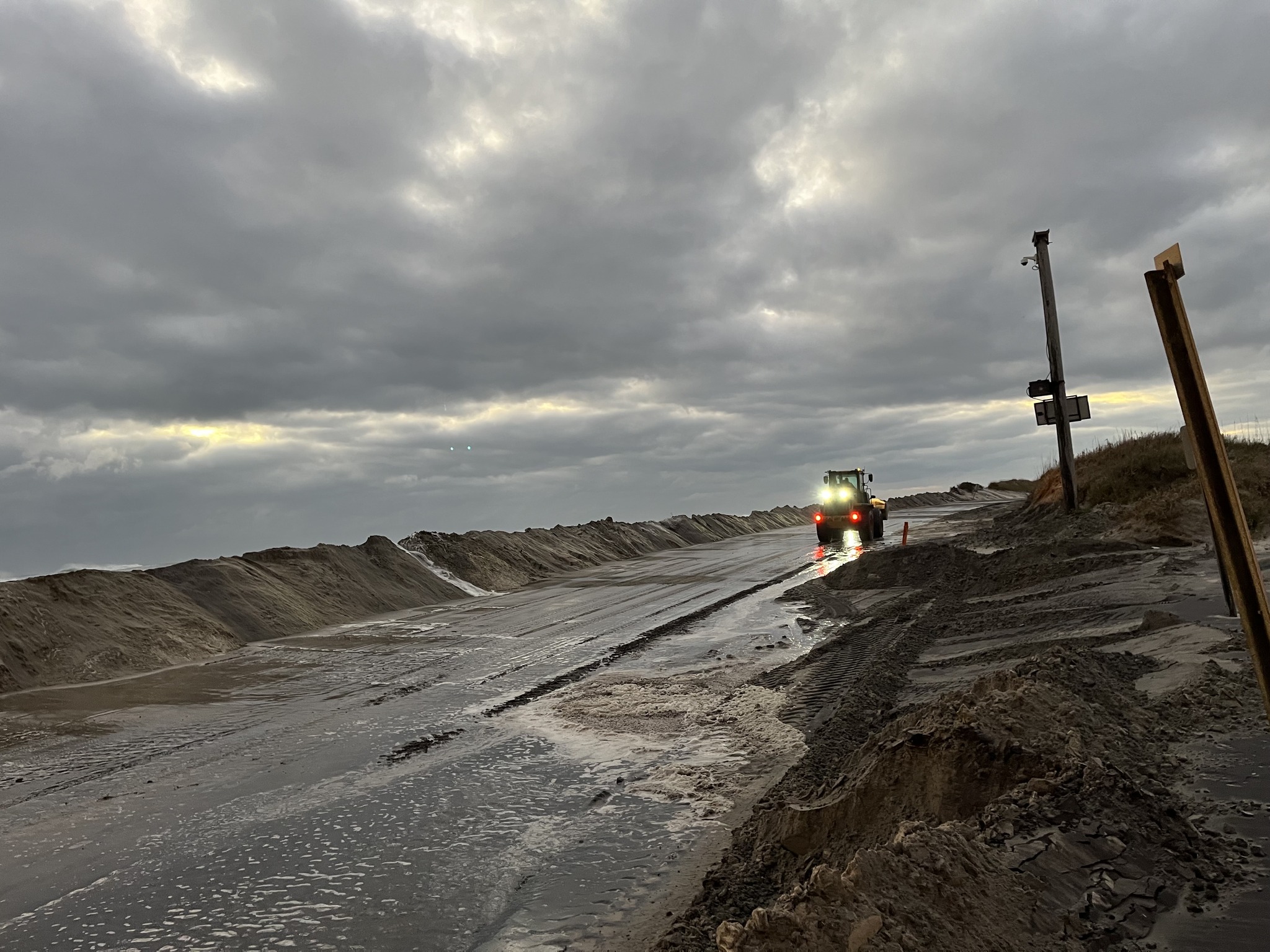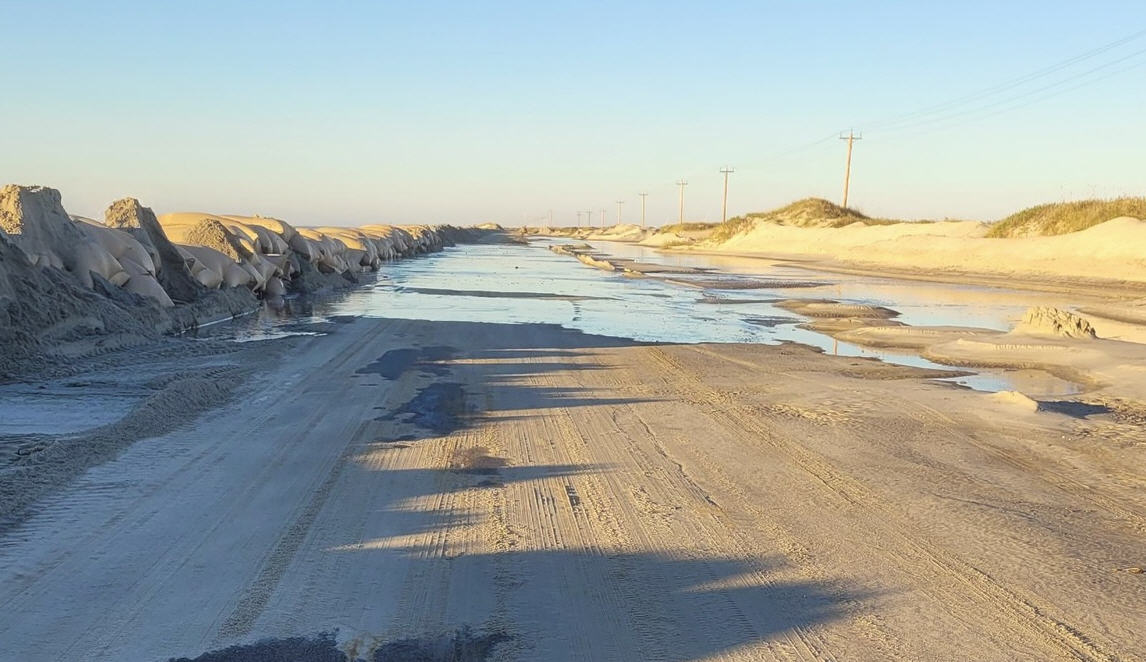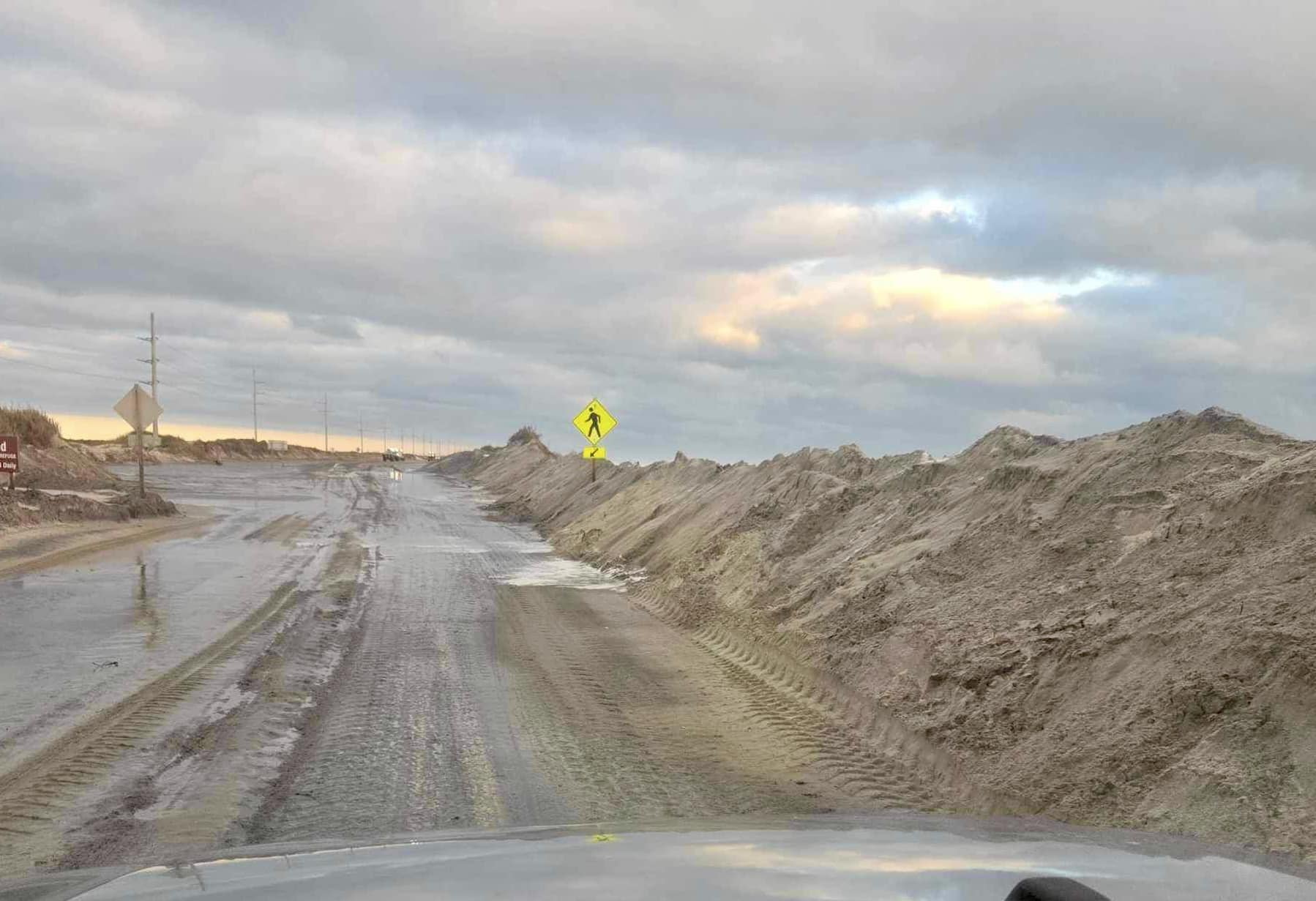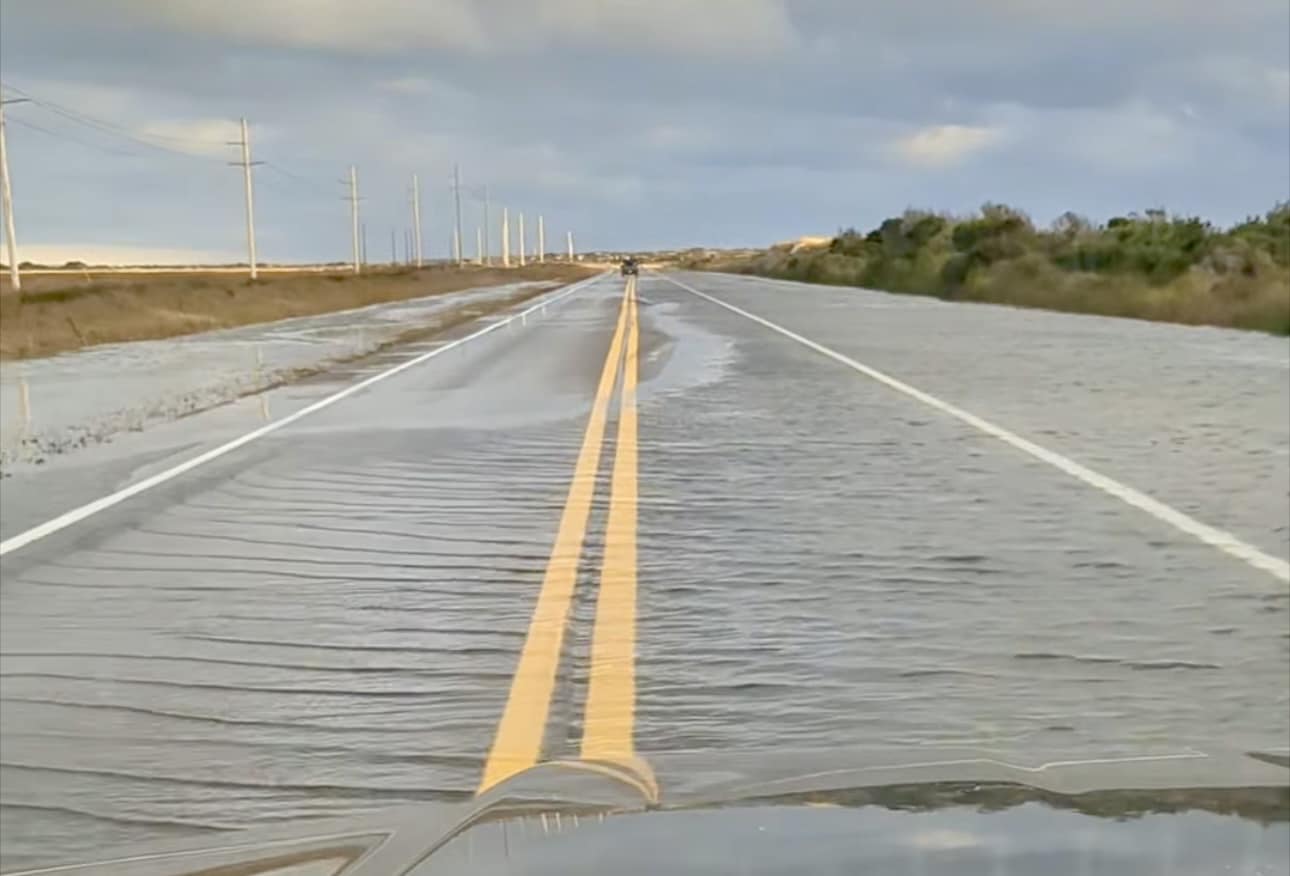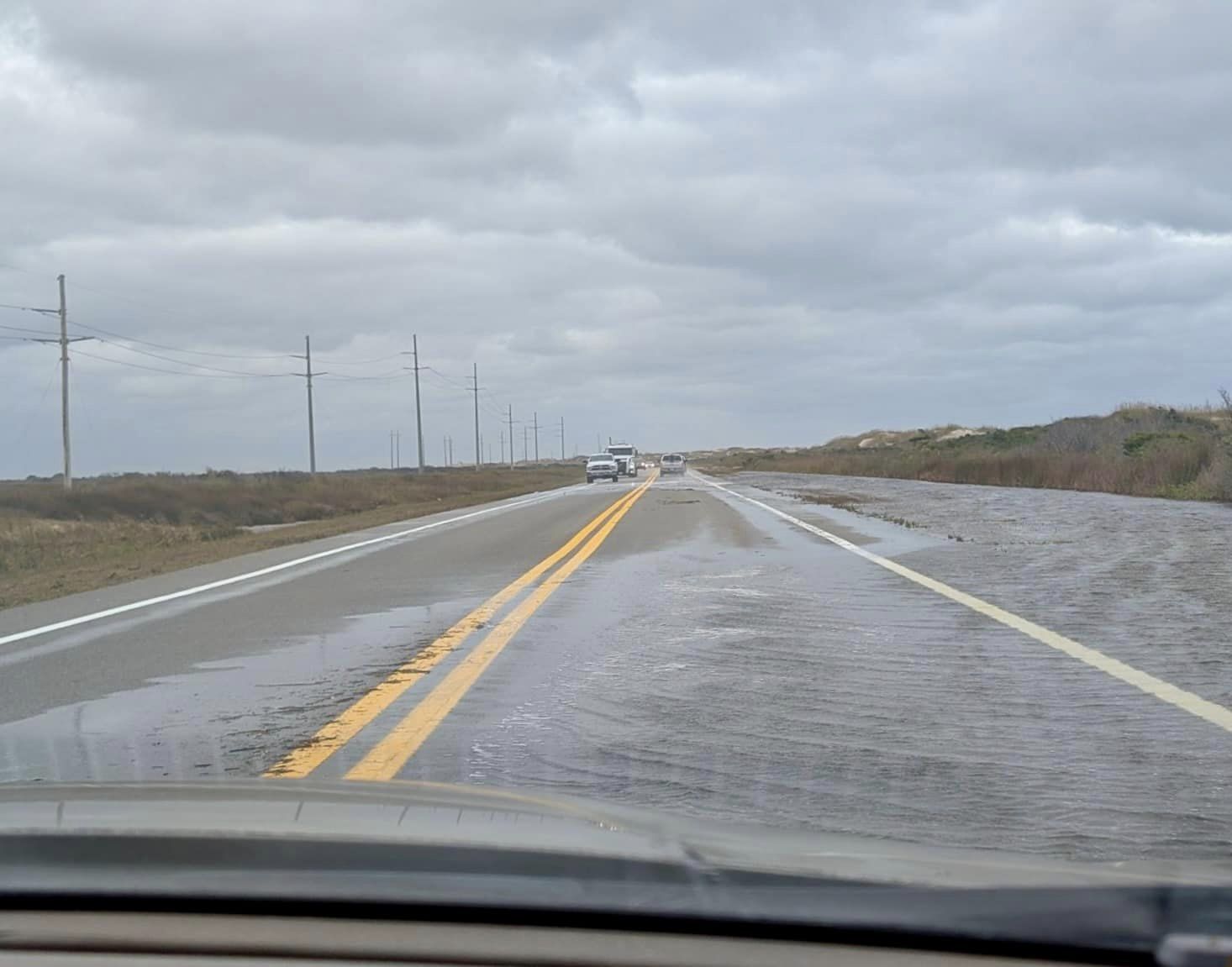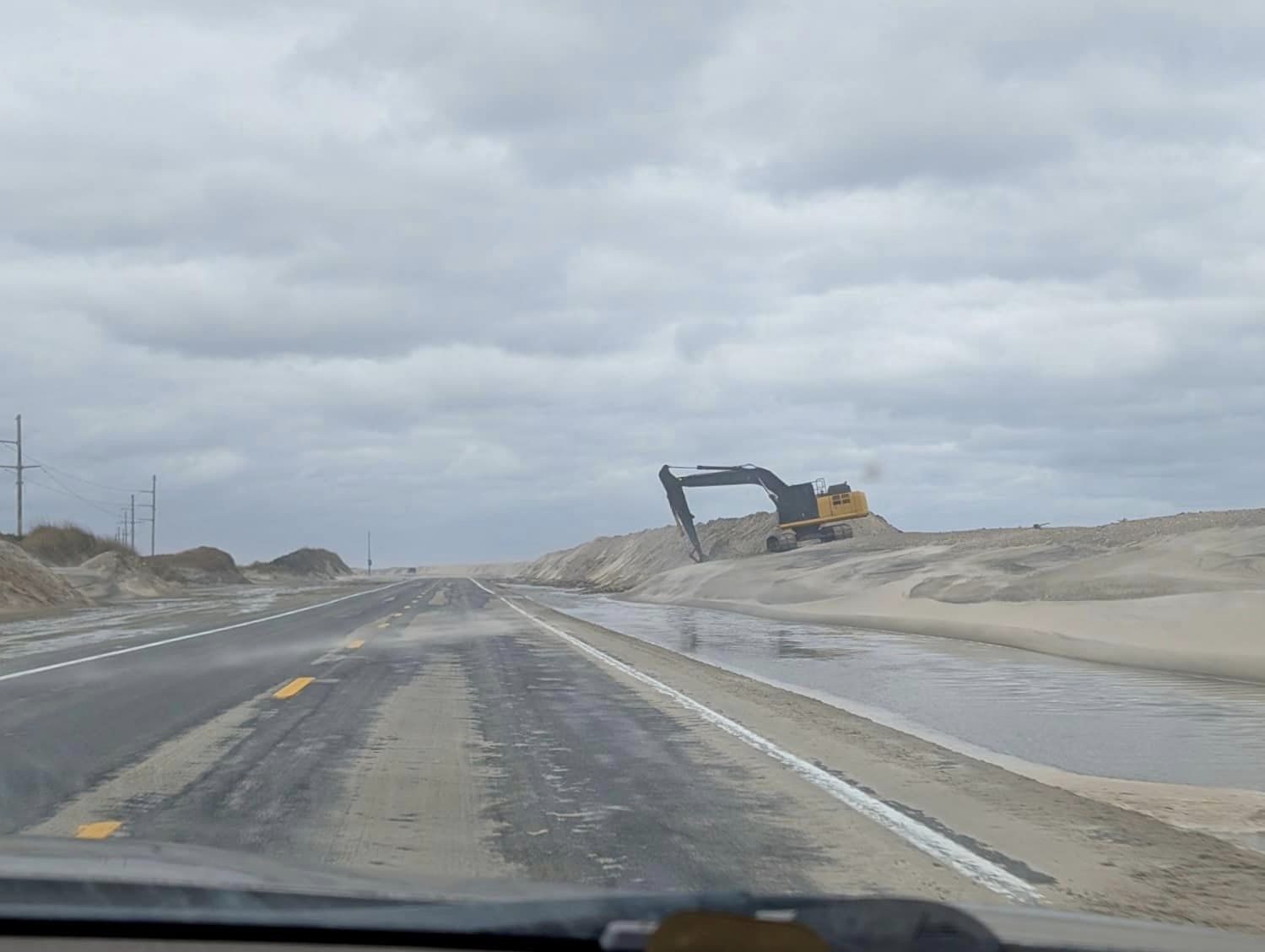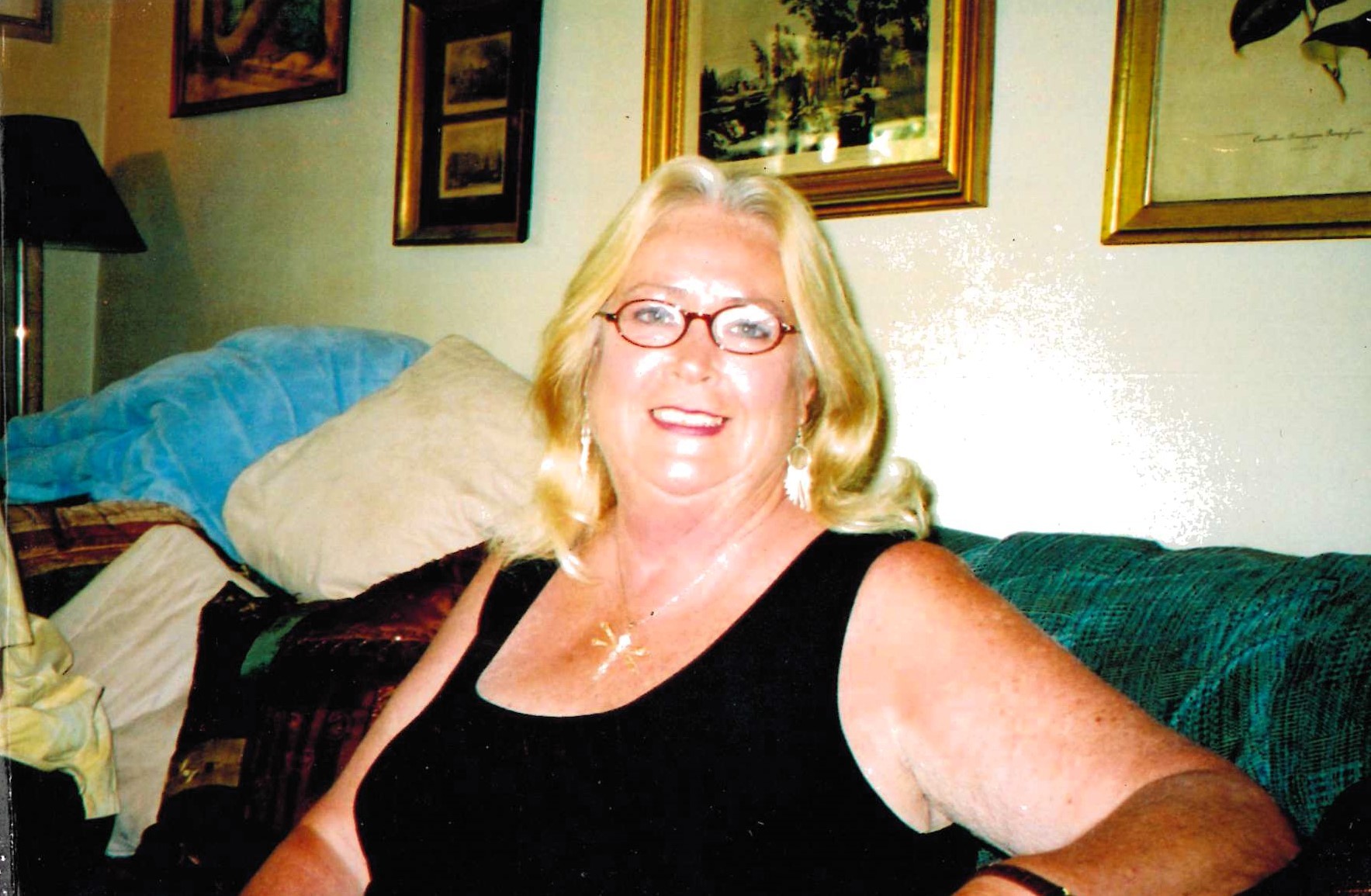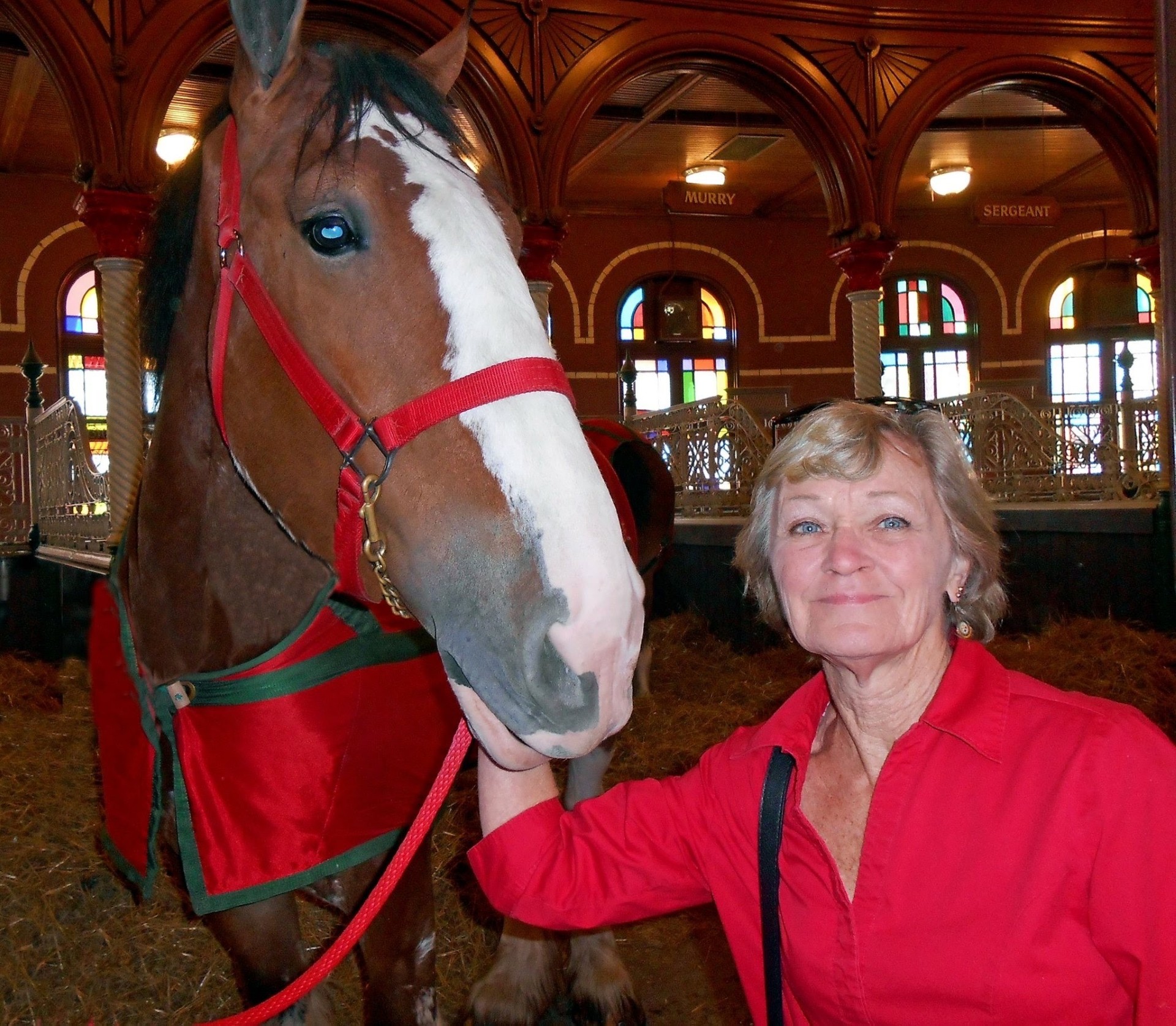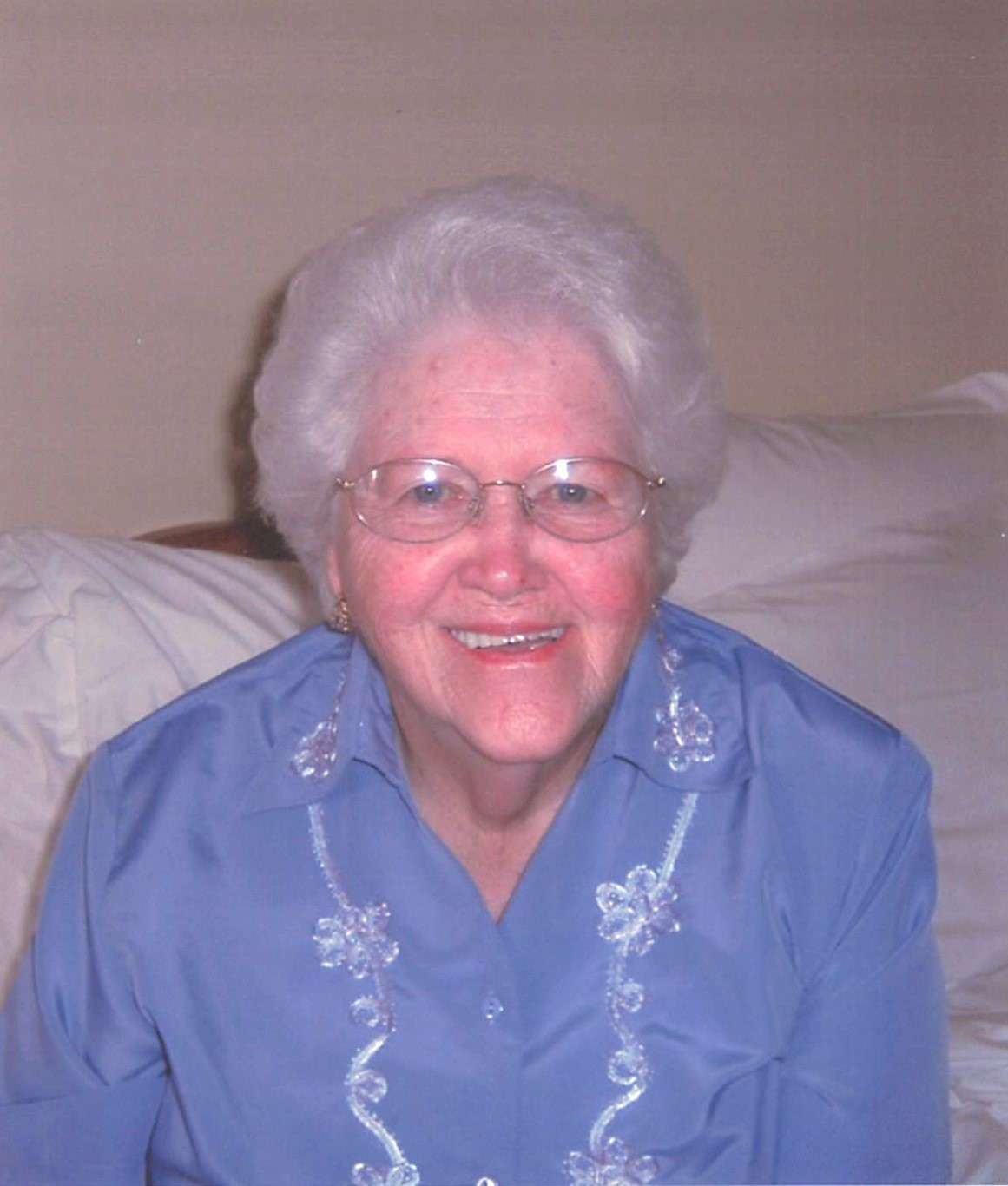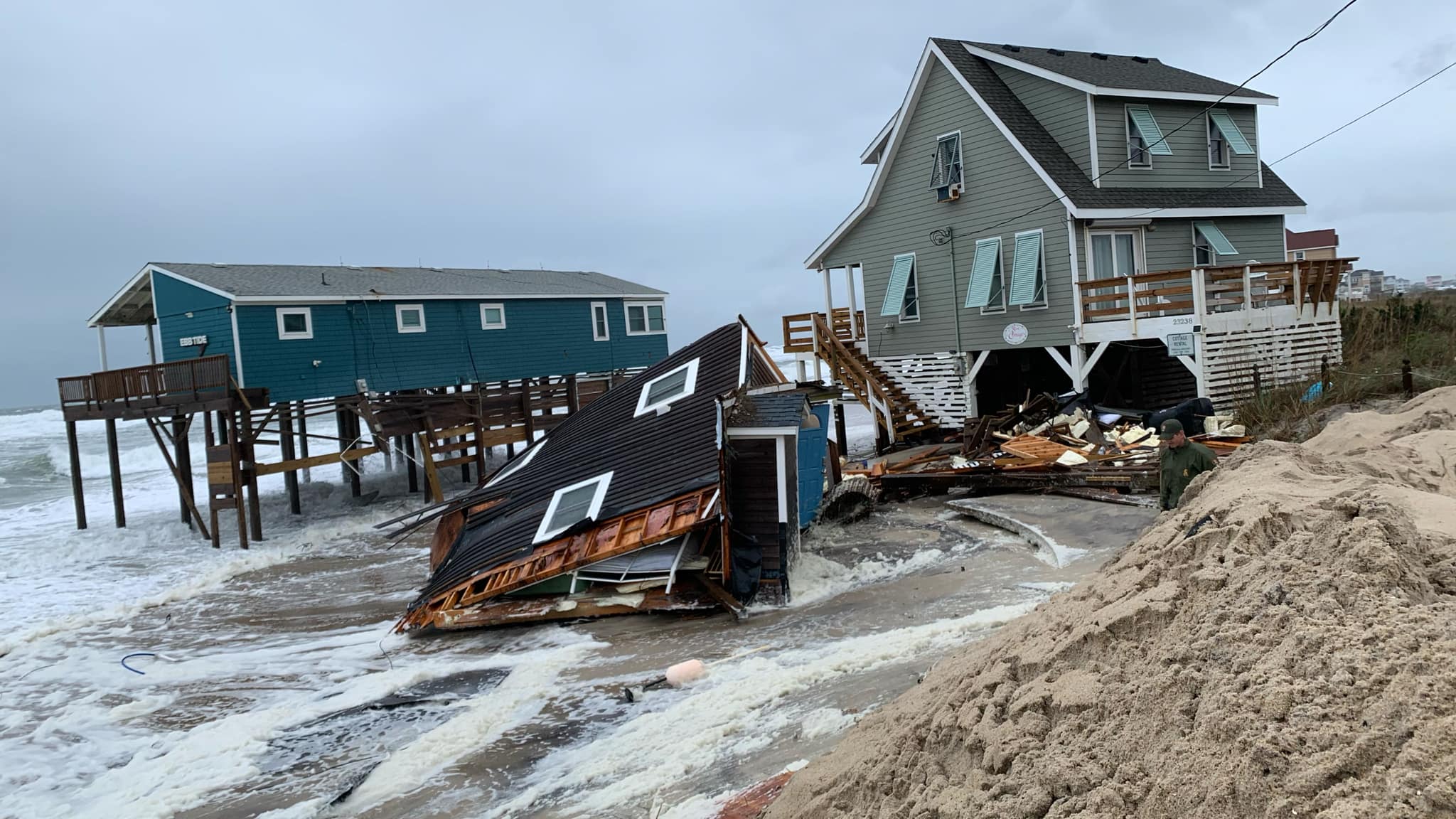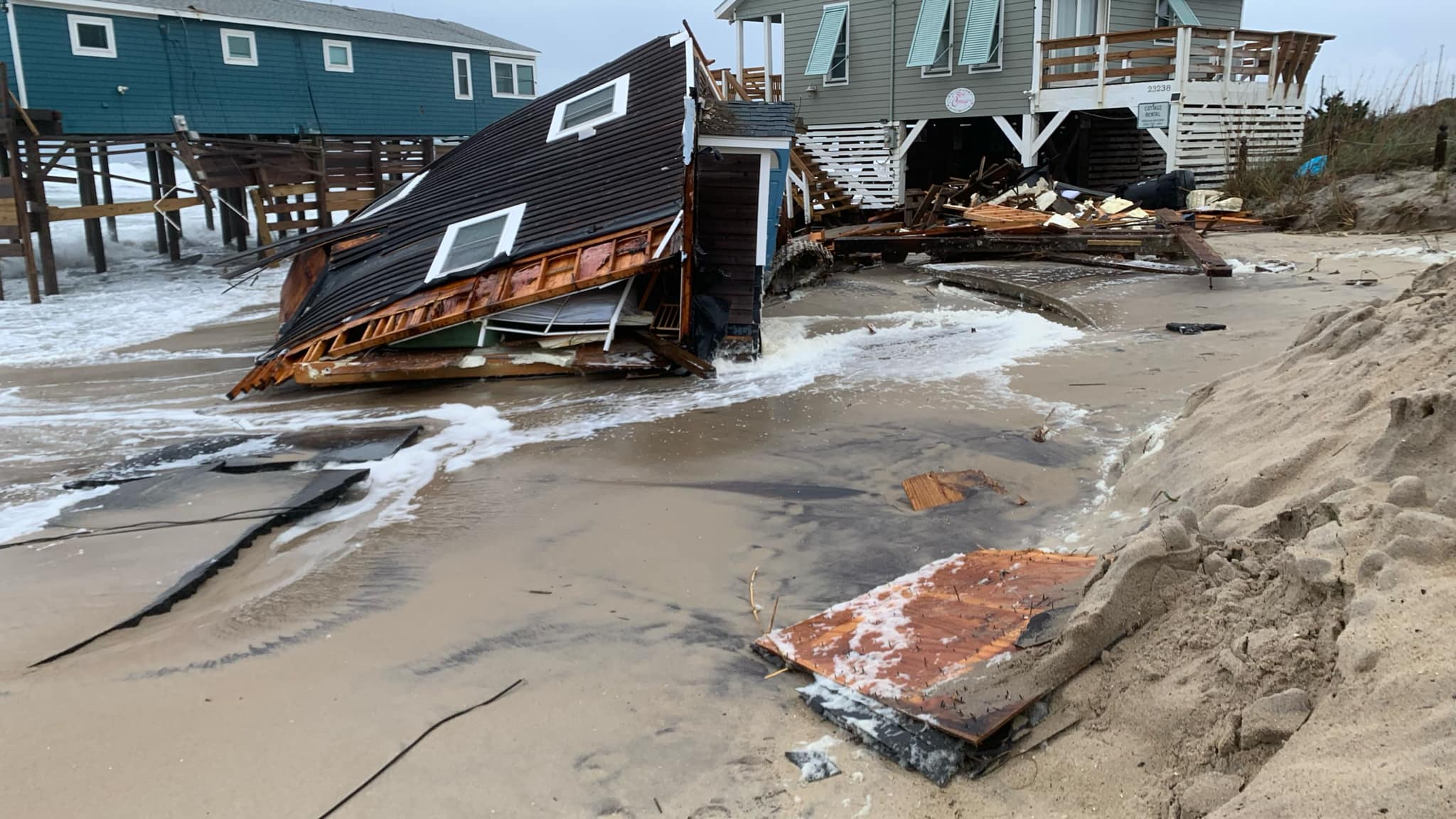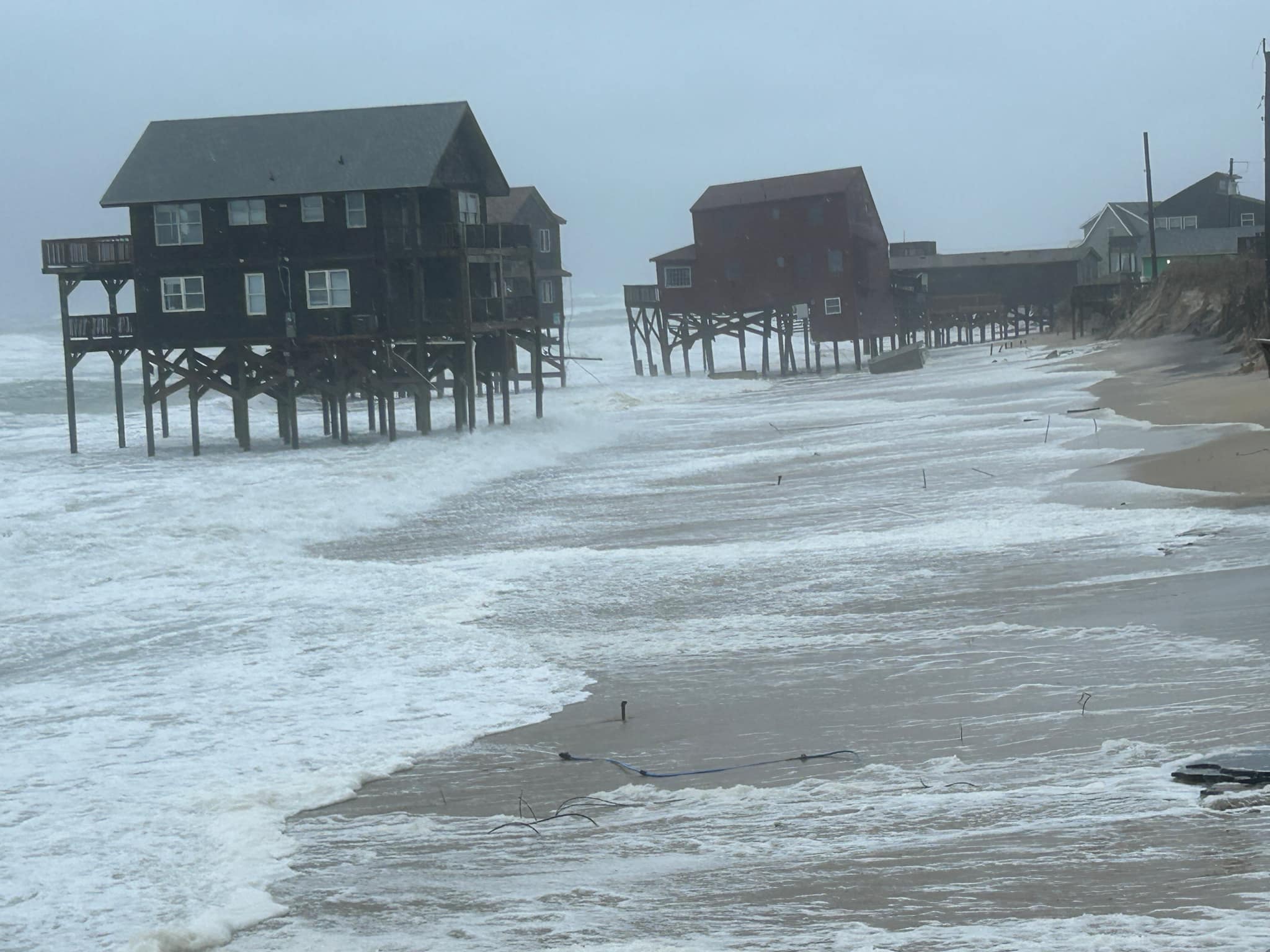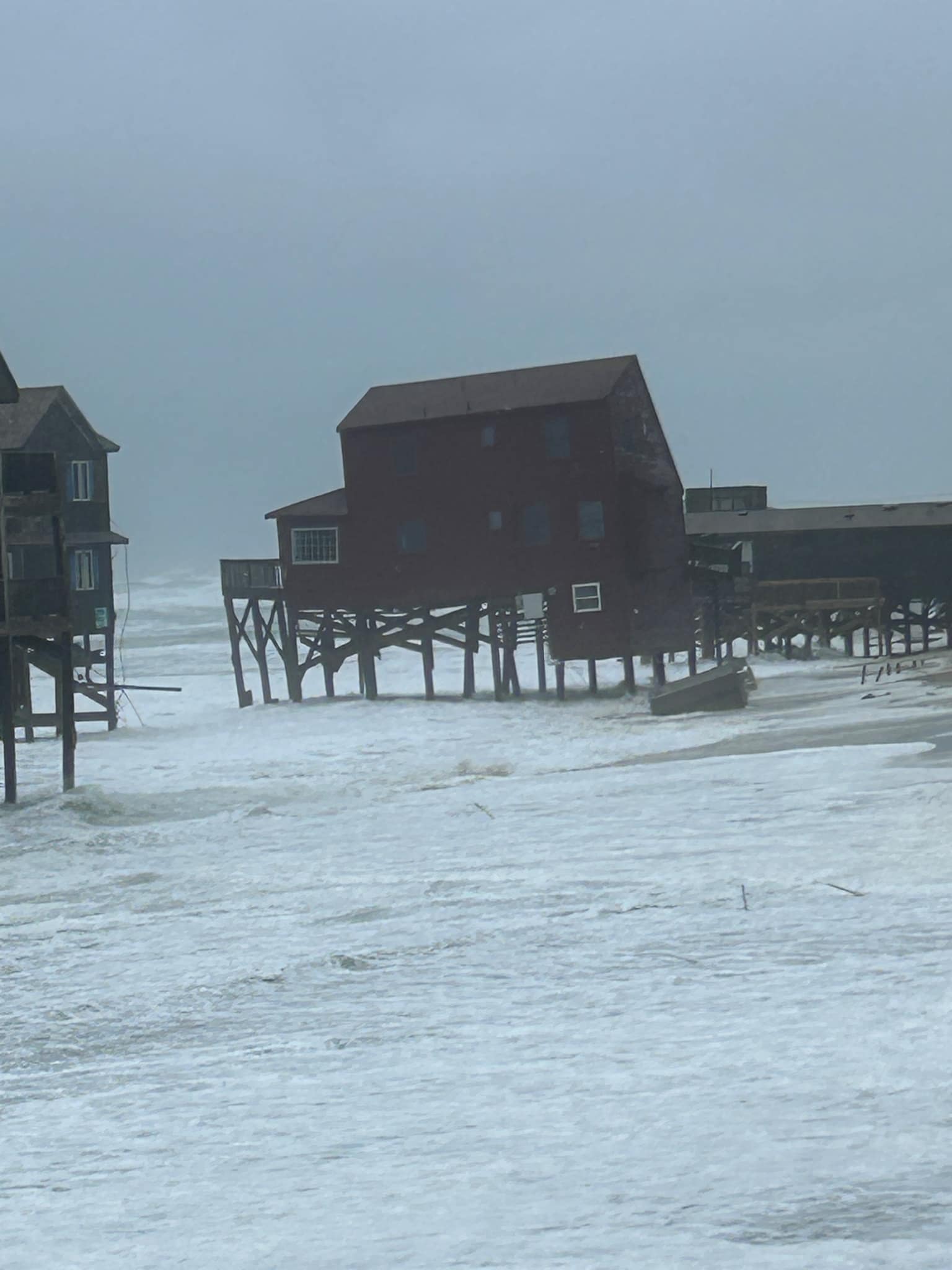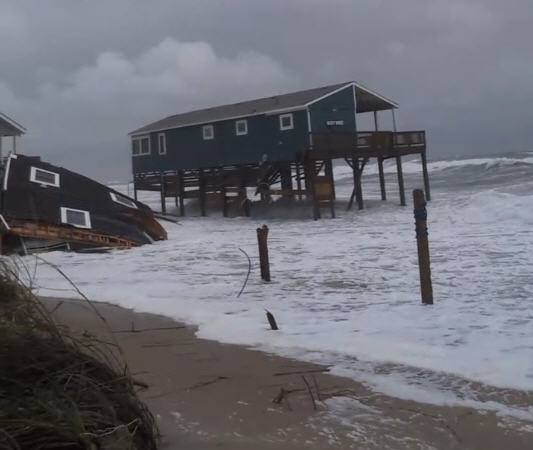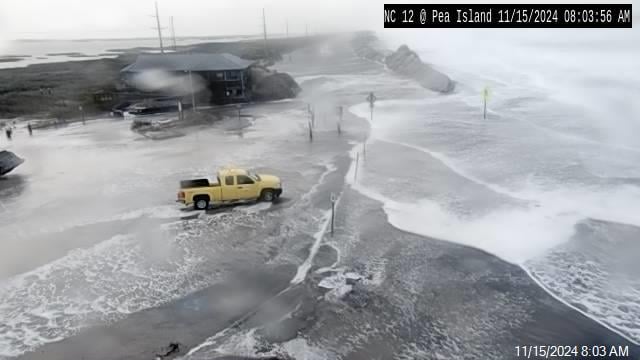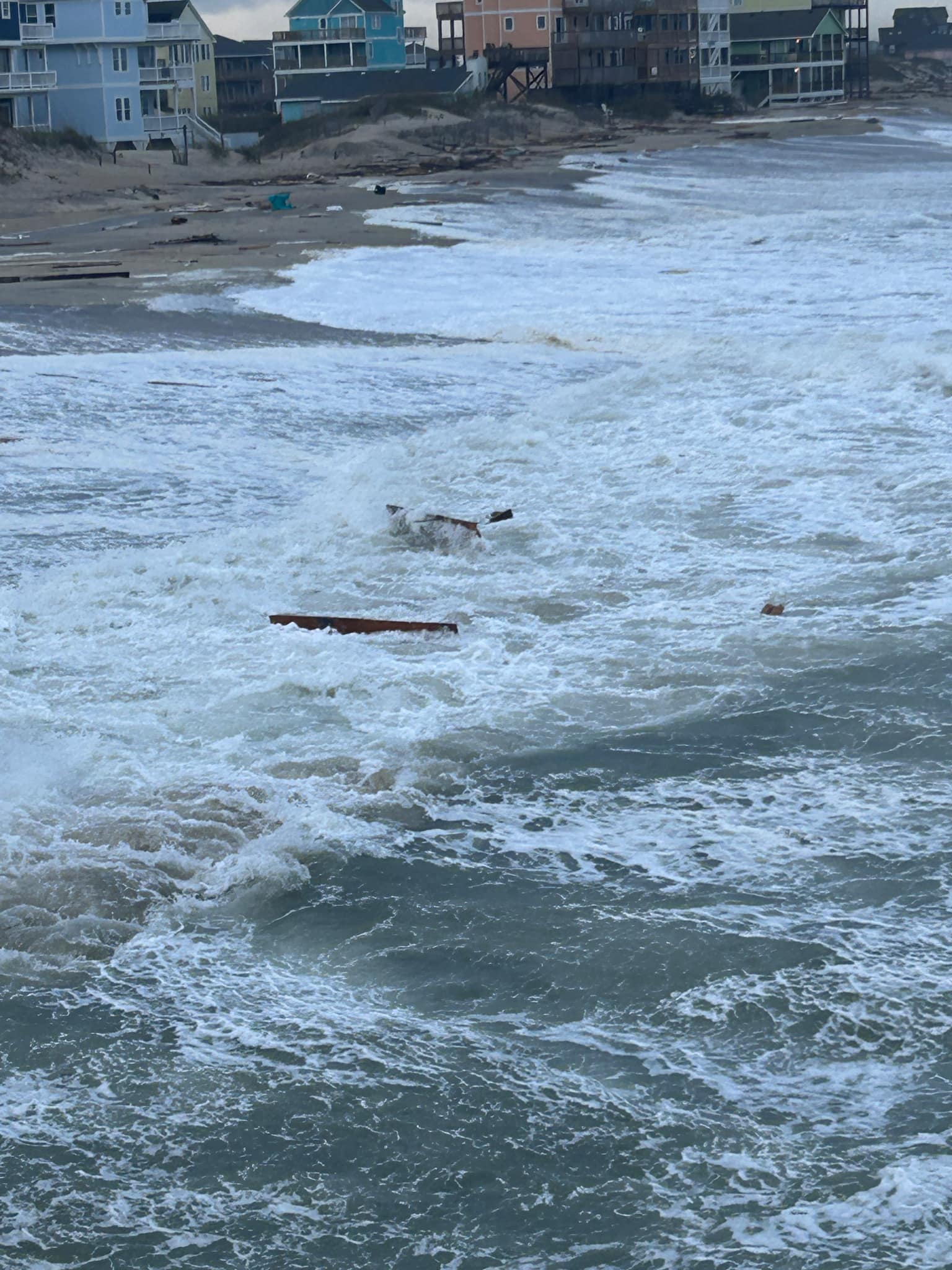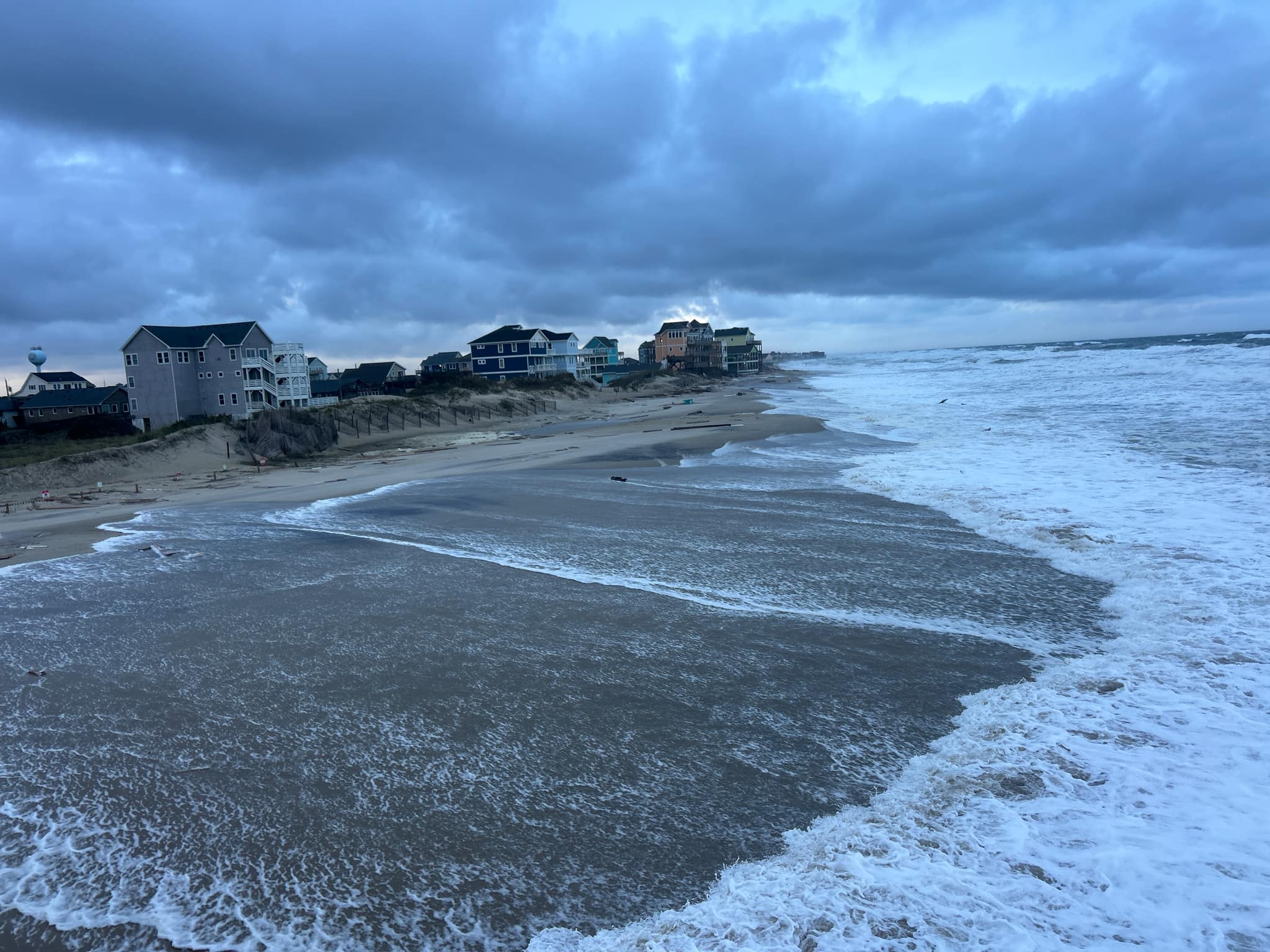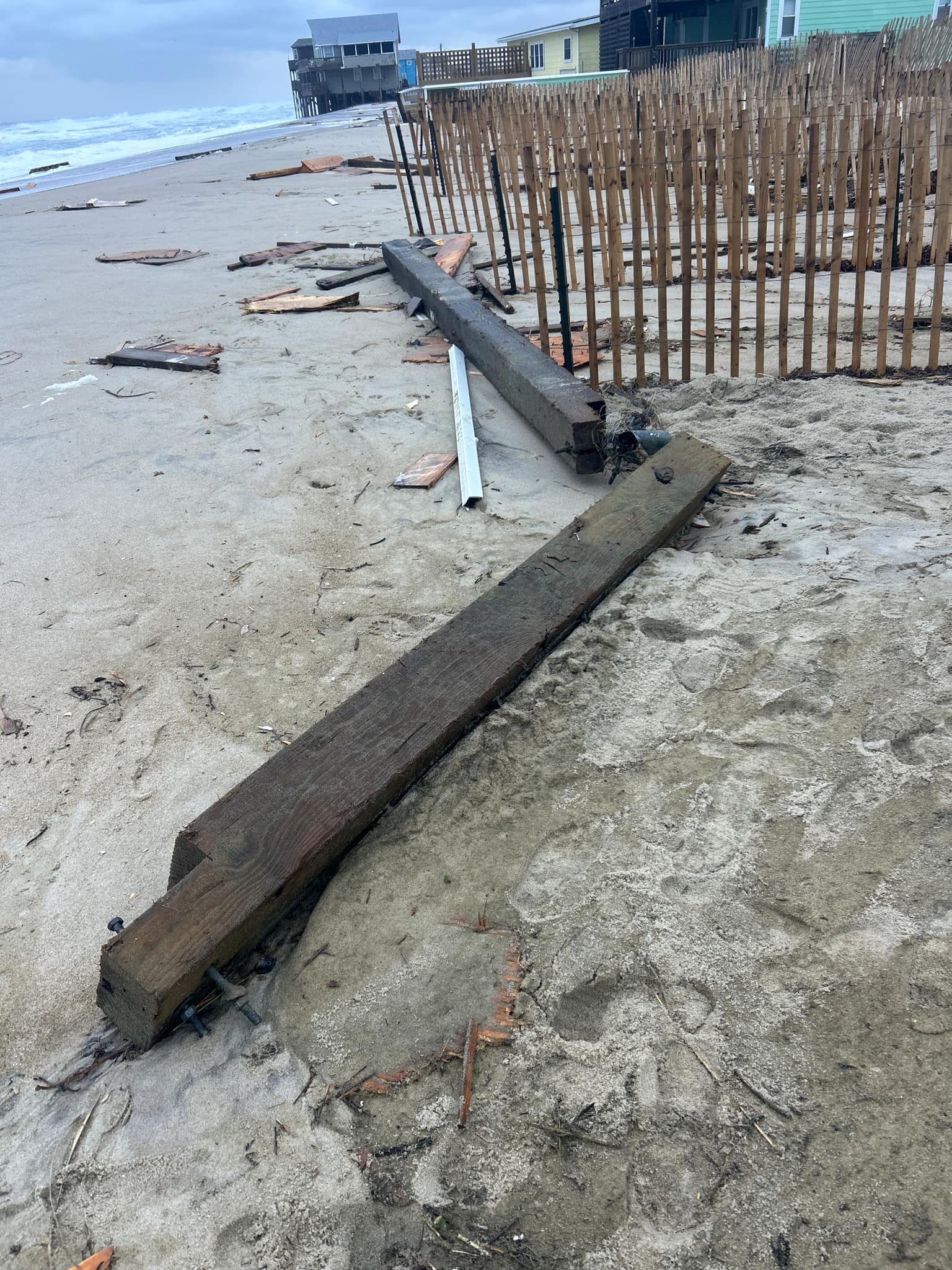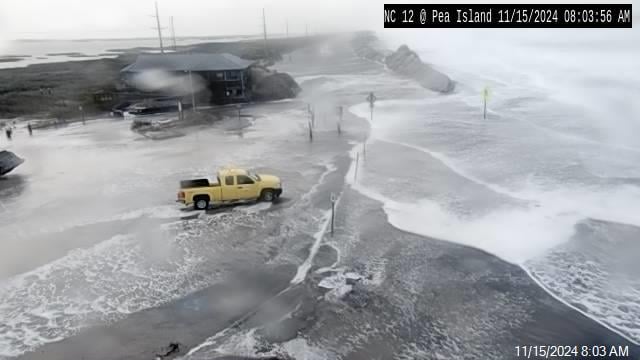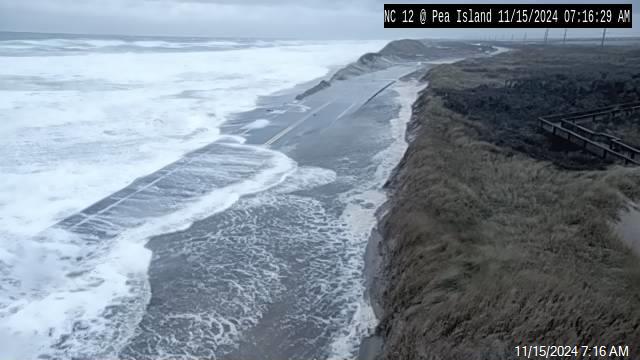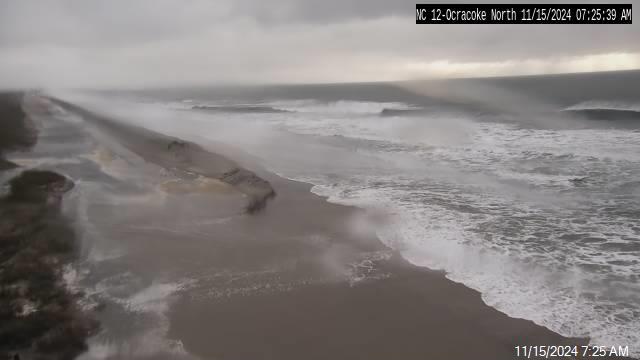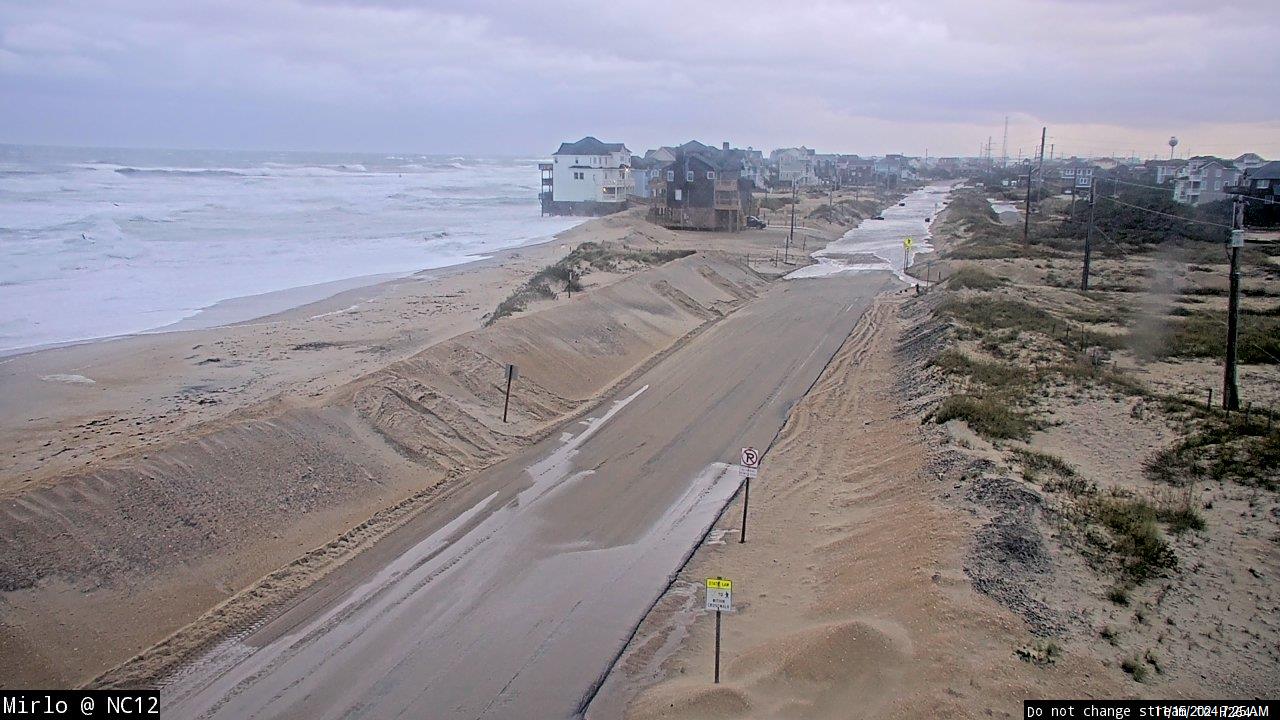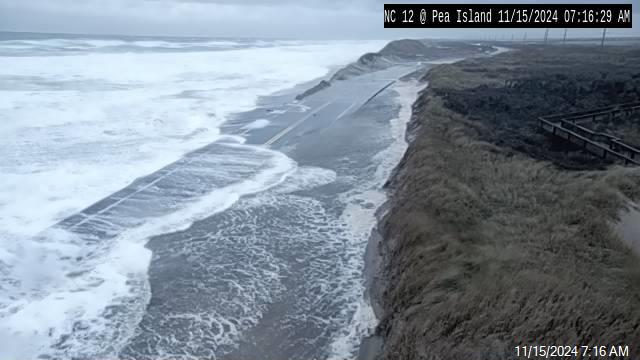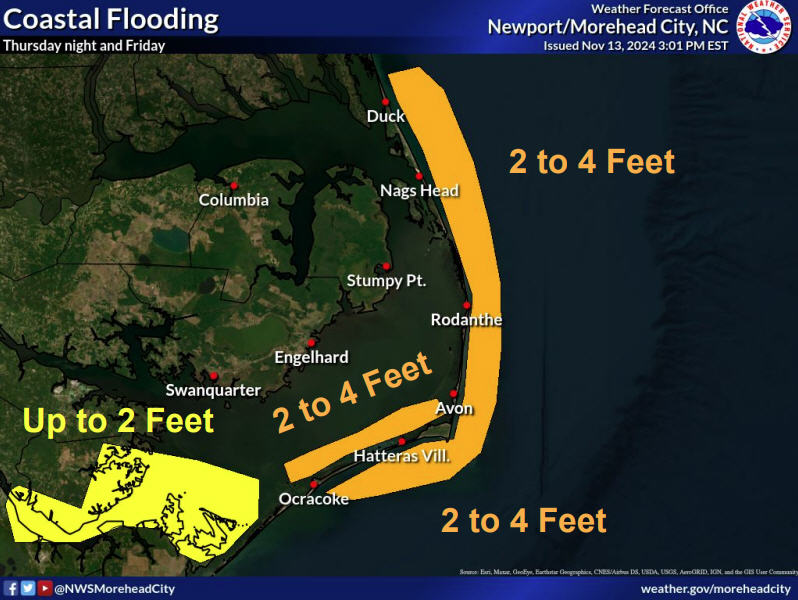New Painting Brings Surfmen’s History to Life
Two bearded men, both in blue U.S. Life-Saving Service uniforms, are standing next to one another on an empty beach in front of a boathouse. The white man holds an anchor with a rope, the black man holds an oar. Their expressions are serious; they’re working — together.
The James Melvin painting was unveiled Sunday in Manteo as the highlight of the program, “Freedmen, Surfmen, Heroes: The Unique Story of the Pea Island Lifesavers,” honoring the history of Pea Island Life-Saving Station and its keeper Richard Etheridge, the only black keeper to serve in the history of the lifesaving service. It depicts Patrick Etheridge, keeper of Creeds Hill station on Hatteras Island, and Richard Etheridge standing side-by-side because, despite the post-Civil War racism, Outer Banks surfmen, black and white, worked side-by-side.
The painting, which Melvin has donated, illustrates the mutual respect and cooperation their work engendered, said Joan Collins, secretary of the nonprofit Pea Island Preservation Society.
“Think about it,” Collins said, leaning toward the children listening intently from the pews at Haven Creek Missionary Baptist Church, a 156-year-old black parish. “In the 1800s, shortly after the Civil War, during Jim Crow laws in the South, right here, on the Outer Banks, black and white were both surfmen. Who would also believe that they worked together to save lives?”
In 1896, Richard Etheridge led his all-black crew in the death-defying – and successful – rescue of all passengers and crew of the E.S. Newman in a raging hurricane. Twelve years earlier, Patrick Etheridge, as well, was involved in a dramatic rescue of passengers on the wreck of the Ephraim Williams off Hatteras Island.
Patrick Etheridge and other Ephraim Williams lifesavers were awarded a gold medal in April 1885 – one year after the rescue. Richard Etheridge and his surfmen at Pea Island were posthumously awarded a gold medal for the E.S. Newman rescue in 1996 — 100 years after the rescue.
Collins, along with her first cousin, Darrell Collins, an acclaimed Wright brothers historian who recently retired from the National Park Service, and popular lifesaving station interpreters Linda Molloy and James Charlet, who depict a keeper’s wife and a keeper, created the Pea Island program to engage Outer Banks children while teaching them Pea Island’s unique history. In the year since, the interactive program has been a hit with tourists and locals of all ages, with the team doing numerous presentations at area schools and the North Carolina Aquarium on Roanoke Island.
“The kids absolutely love it,” Collins said in a later interview. “We thought of it as a way to get kids just to think of what fairness means, what economic opportunity means, what diversity means. They get it.”
Darrell Collins, who became famous as a park ranger for his talks about the Wright brothers’ first flight, used his skills to captivate the children in the story of Richard Etheridge, who was born a slave on Roanoke Island in 1842, likely the son of his master, John Etheridge. As a boy, he was one of the few blacks who was taught to read and write, and as he got older, he worked as a waterman. During the Civil War, he joined to Union Army, where his courage and leadership skills became apparent.
After the war, he got a job as a surfman at Pea Island, and because of his exceptional abilities, he was later appointed as the station’s keeper, where he served until age 58, when he died, likely of malaria.
Molloy told the compelling tale of the Newman rescue, and Charlet provided fascinating details of a surfmen’s duties.
Darrell Collins strolled into the audience and asked children to hold signs, each with a different word: courage, honor, brave, dedication, teamwork, perseverance, determination.
“Who inspires you?” Collins asked the children.
“Rosa Parks,” one girl answered.
Others named Martin Luther King, Jesus, “daddy” and Michael Jordan.
Etheridge’s life, Collins told them, served as examples of the qualities named on the children’s signs.
“He inspired others to follow in his footsteps,” he said.
But over the years, much of the history of the Freedmen’s Colony on Roanoke Island, of which Collins’ family is descended, and the Pea Island station has been unrecognized, even by some members of the black community on Roanoke Island.
Ruth Lewis, 79, said that her grandfather was Theodore Meekins, the first surfman to plunge into the sea during the Newman rescue. But she said that her grandfather died when she was young, and her family rarely talked about the rescue.
“They knew about it, but it’s just come out now, more than ever,” Lewis said after the presentation. “I knew my grandmother, but when you’re so young, you don’t ask. Not even my father talked about it.”
Pastor Ray Hill, who has worked at Haven Creek for eight years, said that he has noticed that there are a lot of connections in the community. But it doesn’t seem as if local children know enough of their history.
“Everybody is kin to each other – black and white,” he said about knowledge of local history. “But it seems to me it should be further along by now … (And) the rest of the country doesn’t know the commitment of Pea Island. It seems like it’s been hidden for so long.”
Until about 40 years ago, the graves of Richard Etheridge and his family were under concrete on the north end of Roanoke Island, where the Navy had built an airstrip during World War II. It wasn’t until the North Carolina Aquarium on Roanoke Island was being built that the graves, the headstones laid flat on the ground, were rediscovered.
Today, the graveyard is encircled by a fence at the entrance of the facility. In 2016, the aquarium unveiled interpretative signage about Etheridge, the Freedmen’s Colony, Pea Island and the U.S. Life-Saving Service.
After much effort by the late Dellerva Collins, Darrell Collins’ mother and a longtime Manteo town commissioner who died in 2005, grant money was found to relocate the Pea Island cookhouse to a site across the street from the Haven Creek Baptist Church, now known as Collins Park. The building was restored into the Pea Island Cookhouse Museum, and some lifesaving equipment and original signboard from the E.S. Newman is on display. A statue of Richard Etheridge stands nearby.
Joan Collins’ father, Herb Collins, worked at the Pea Island station when he was in the Coast Guard. He turned the key for the time when the station closed in 1947. And her great-great uncle participated in the Newman rescue, her great-great grandfather had served under Etheridge in the years after the rescue and her great uncle was the last black keeper at Pea Island.
Darrell Collins also has a family connection to the station. His great-great grandfather served under Etheridge and participated in the Newman rescue. His father served in the Coast Guard as well. Between them, the cousins say, there’s 400 years of combined service in their families.
In the near future, as founders of the Pea Island Preservation Society, the Collinses’ plan to do more marketing and to improve the educational program, with a focus on the shared stories of the black and white families on the Outer Banks.
“I don’t believe that the Cookhouse Museum is going to gain momentum unless we offer something to the community – to teach the story in an inclusive way,” Joan Collins said. “I think for the community to embrace the Pea Island history, we need to bring out the message of unity.”
It’s an effort that Dellerva Collins, the founder of the Freedmen’s Colony Coalition, got behind years ago, but she had her share of frustration at the slow progress.
In 2002, she was instrumental in getting a town resolution passed requesting that the new bridge across the Croatan Sound be named in honor of Capt. Richard Etheridge. Manteo was the only town on the Outer Banks that came out in favor of the Etheridge name instead of Virginia Dare, the English baby born in 1587 on Roanoke Island. Even then, some people were openly dismissive at the idea of a bridge being named after a black man. And Collins, in turn, expressed annoyance that yet another thing would be named after The Lost Colony.
But on Feb. 20, Dellerva Collins got her way, albeit at a smaller scale. At a ceremony in Rodanthe – not far from the former location of the Pea Island Life-Saving Station, the state Department of Transportation dedicated the new Capt. Richard Etheridge Bridge.



